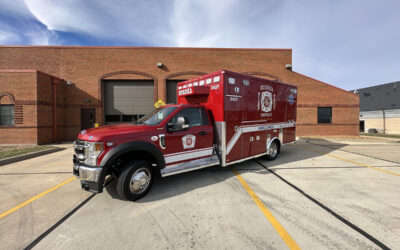
File Photo
By Jason D. Haag, CCEMT-P, CIC, CAC, CADS
Many times in EMS, especially with recent winter storms in many areas of the country, we may encounter situations that come close to causing injury to us and/or damage to our equipment. This leads EMS providers to ask the following question: Should I report this?
The resounding answer to this question is yes! The purpose of reporting the near-misses is to be able to track incidents that may repeat themselves. If your agency institutes near-miss reporting, it is not meant to be punitive – it is meant to be a tool to identify issues in processes, policies, procedures or equipment. Without these incidents being reported, change cannot happen.
More from the Author
- Should We Be Transporting Lights and Sirens?
- Optimizing Your Ambulance Design
- The Future is Electric
Incidents that are near-misses may be a near collision while driving, nearly dropping a patient, slips, near falls or nearly being hit while operating in roadways. While there may not have been any injury or damage and the incident seems inconsequential, the opposite is true. The next time this happens, the outcome may not be so positive which is why these incidents must be reported.
We understand that when an incident causes an injury, it is paramount that action be taken. As previously mentioned, acting without injury may serve to prevent injury in future incidents. Therefore, reporting near-misses comes into play.
For a near-miss reporting system to work, every agency member should understand that they need to report all near-misses as they would an actual incident. It is the responsibility of agency leaders to make sure reporting procedures are clear and concise. As if reporting a true incident, there are important data points that should be included in the report to give the reviewing team as much information as possible to ensure effective action can be taken. Helpful information may include:
- Date and time
- Location
- Type of incident
- Activities taking place prior
- Detailed information on what happened
- Details of person(s) involved
The reasons for reporting a near-miss are obvious, but there are many reasons people don’t report them. One of the reasons may be that people aren’t aware of the reporting procedures, which is why leadership needs to make sure they are published and easy to understand. Near-misses may go unreported due to:
- Fear of being reprimanded or getting a co-worker into trouble
- Amount of paperwork involved
- Incident does not seem serious enough to be reported
- Poor experiences from previous reporting of incidents
If your agency has a near-miss reporting program, kudos! Look at the program and see if there are ways to make it more user-friendly and to see if there are ways to improve the program. If this is something your agency is lacking, discuss the benefits with agency leadership and work to implement a program to help make your agency as safer place to work for both your members and your patients.
Jason D. Haag, CCEMT-P, CIC, CAC, CADS, is the quality assurance analyst and clinical educator for MultiMed Billing in Baldwinsville, NY. He is also an active paramedic with Wayne County Advanced Life Support, a firefighter for The City of Geneva Fire Department, and serves on many EMS boards and community organizations. Jason is also a speaker at many EMS conferences across the country.




